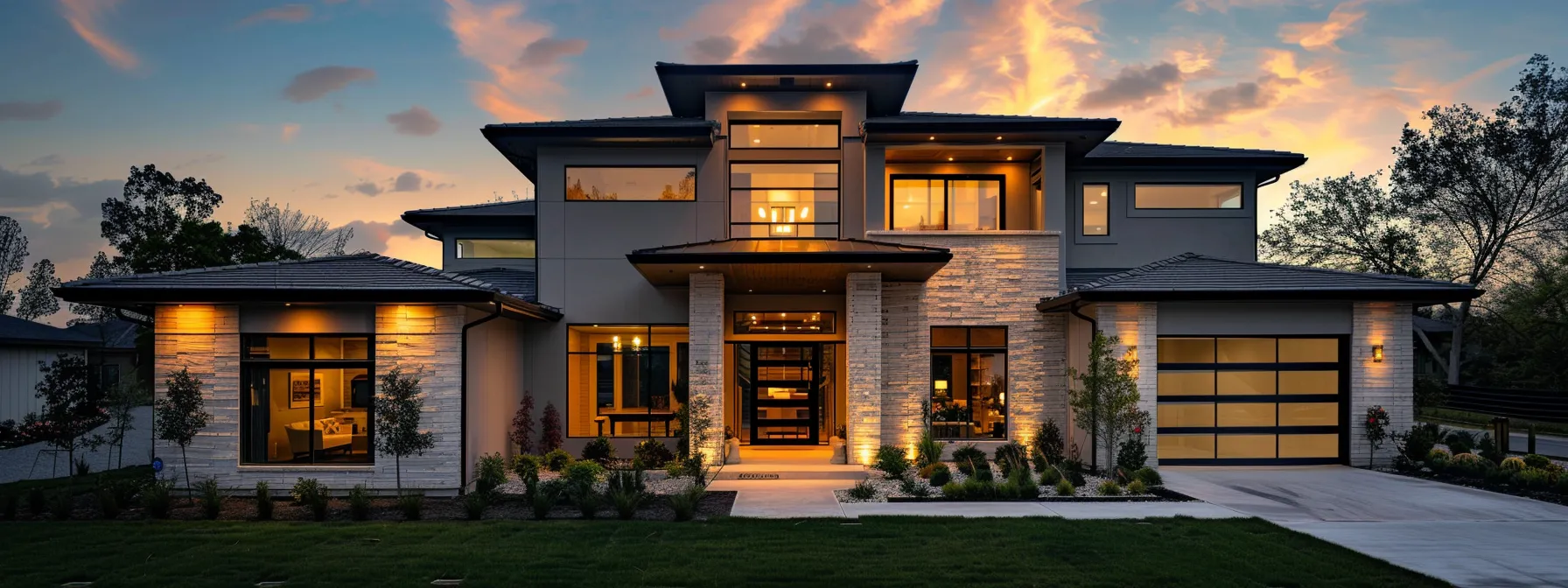Residential Generator Capacity Recommendations for Your Home
How do you know what size generator your home really needs? Many homeowners in Lexington face this challenge, especially when preparing for unexpected power outages. This article will help you assess your power requirements, select the right generator capacity, and understand the differences between portable and standby generators. By reading on, you’ll gain valuable insights to ensure that your home stays powered during outages, preventing costly disruptions and enhancing your peace of mind. Don’t let power failures catch you off guard—let’s explore the right generator solutions for your needs.
Assessing Power Requirements for Your Home

Determining the power requirements for a home is crucial for selecting the right standby generator. Evaluating essential appliances and devices ensures that vital systems like heating radiators and indoor air quality monitors remain operational during outages. Understanding continuous and peak power needs, alongside creating a comprehensive wattage list, allows homeowners to make informed decisions about their gasoline generator capacity. For additional support, consider home backup generator services louisville ky.
Evaluating Essential Appliances and Devices
When evaluating essential appliances and devices, homeowners must consider their specific power needs during outages. Key items such as air conditioning systems, refrigerators, and heating units often require significant wattage to operate effectively. Understanding the frequency and wattage of these appliances, along with the engine capacity needed to support them, is crucial for selecting the right home backup generator. For those in Louisville, KY, utilizing expert home backup generator services can further guide effective decision-making, ensuring that all vital systems remain functional during power disruptions.
Understanding Continuous and Peak Power Needs
Understanding continuous and peak power needs is essential when assessing residential generator capacity. Continuous power refers to the wattage required to run essential devices steadily, such as lighting and refrigerators, while peak power indicates the surge of energy needed to start heavy appliances like air conditioners. Effective load management, including understanding the oil consumption of standby generators, ensures that homeowners can select a generator capable of meeting both steady and temporary demands during power outages, keeping their homes fully functional.
Creating a Comprehensive Wattage List
Creating a comprehensive wattage list is a key step for homeowners in assessing their power needs for standby generators. This list should include the wattage requirements of all essential appliances, such as refrigerators, ovens, and heating units, ensuring that energy demand is accurately calculated. Consulting with a qualified electrician can provide valuable insights on generator sizing and safety considerations, including potential carbon monoxide risks associated with generator use, while also reviewing warranty options for added peace of mind.
Selecting the Right Generator Capacity

Selecting the right generator capacity involves comparing generator sizes and their applications, balancing capacity with average usage, and considering future power needs. Homeowners should assess the wattage needed for electronics, pumps, and central air systems while ensuring that the chosen home standby generators can handle both current demands and potential increases. This careful evaluation guarantees a reliable power source for essential devices during outages.
Comparing Generator Sizes and Their Applications
When comparing generator sizes and their applications, homeowners should consider the specific needs of their household. For instance, larger generators are more suitable for homes requiring significant power for essential systems, such as central air conditioning and refrigerant-based appliances, while smaller models may suffice for smaller residences where only vital devices like a sump pump or basic lighting need backup support. Understanding the fuel type, whether it be natural gas or gasoline, also impacts functionality and convenience, as each generator tank size has different run times and capacities to meet the power demands effectively.
Balancing Capacity With Average Usage
Balancing the capacity of a standby generator with average usage is crucial for effective home backup power management. Homeowners must consider the operational requirements of essential systems, such as heat pumps and medical devices, which may demand significant wattage during outages. Choosing dual fuel generators that can operate on propane or gasoline offers the flexibility needed to sustain power through various conditions while ensuring that all critical equipment functions seamlessly.
Considering Future Power Needs
Considering future power needs is vital when selecting a home standby generator. Homeowners should assess the potential addition of appliances, such as a furnace or additional heating equipment, which may require higher wattage and impact the home’s overall energy demand. Installing a transfer switch provides a seamless transition for power supply and helps in managing the load on the circuit breaker, ensuring that all necessary equipment remains operational during outages while accommodating any future requirements.
Factors Influencing Generator Capacity Recommendations

Analyzing home size and layout provides essential insights for homeowners when choosing the right generator capacity, especially considering areas like the basement. Evaluating local climate and weather patterns can influence energy requirements, impacting appliances like the clothes dryer. Additionally, accounting for extra power needs ensures preparedness for potential power outages, measured in British thermal units, helping to maintain all critical systems efficiently.
Analyzing Home Size and Layout
Analyzing home size and layout plays a critical role in determining the appropriate generator capacity for residential needs. Homes with central air conditioners typically demand higher wattage during peak demand, necessitating a generator that can handle this load efficiently. Additionally, considerations around noise levels associated with generator operation are essential, as larger units may produce more sound, impacting comfort in outdoor spaces while in use. Understanding these factors helps homeowners select a Generac model that effectively meets their specific energy requirements and maintains a peaceful environment during power outages.
Evaluating Climate and Weather Patterns
Evaluating climate and weather patterns is essential for determining the appropriate generator capacity for a home. Areas prone to severe weather events, such as heavy storms or extreme temperatures, may require a generator with higher wattage to support additional heating or cooling needs. By understanding local climate conditions, homeowners can proactively select a generator that provides reliable backup power, ensuring that essential systems operate smoothly during outages.
Accounting for Additional Power Needs
When accounting for additional power needs, homeowners must consider extra appliances and devices that may not initially seem essential during outages. Factors such as home extensions, new heating systems, or medical equipment can significantly increase wattage requirements. By evaluating these potential future demands alongside current needs, homeowners can select a standby generator that not only meets immediate power requirements but also accommodates any upcoming changes, ensuring reliable energy supply during power interruptions.
Choosing Between Portable and Standby Generators

Portable generators offer flexibility and convenience for homeowners with smaller power needs, making them ideal for limited appliances and temporary use. In contrast, standby generators provide comprehensive power coverage for the entire home, ensuring essential systems remain operational during outages. Assessing installation requirements will help homeowners determine the best option that aligns with their energy demands and long-term needs.
Benefits of Portable Generators for Small Needs
Portable generators offer a practical solution for homeowners with limited power needs, providing convenient backup during outages. These units are particularly beneficial for powering essential appliances such as refrigerators or outdoor lights, making them suitable for temporary use when the grid fails. Additionally, their lightweight design allows for easy transport, enabling users to address varied power requirements across different areas of their property, ensuring they maintain critical functions without overwhelming their power capacity needs.
Advantages of Standby Generators for Whole Home Coverage
Standby generators offer significant advantages for homeowners seeking comprehensive power coverage during outages. Unlike portable generators, standby units provide automatic power restoration, ensuring that essential systems such as heating, refrigeration, and lighting remain operational without manual intervention. This seamless integration into the home’s electrical system not only enhances convenience but also guarantees peace of mind, as homeowners can rely on continuous energy supply even during severe weather or extended outages.
Assessing Installation Requirements
Assessing installation requirements for both portable and standby generators is a critical step in ensuring reliable backup power for residential needs. Homeowners must determine the appropriate location for installation, considering factors such as proximity to the main electrical panel, ventilation needs for both fuel types, and local regulations for generator placement. Engaging with a qualified electrician can provide essential support in navigating these requirements, ensuring that the installation meets safety standards while optimizing generator performance for efficient operation during outages.
Maintenance and Management of Generator Capacity

Regular maintenance is essential for ensuring the optimal performance of residential generators. Monitoring power consumption during outages helps homeowners understand their usage patterns, while upgrading and adjusting capacity as needs evolve keeps systems reliable and effective. These aspects are vital to maintaining seamless energy supply for essential appliances during power disruptions.
Regular Maintenance for Optimal Performance
Regular maintenance is essential for ensuring that residential generators operate at peak efficiency, particularly during power outages when reliability is critical. Homeowners should schedule routine checks to inspect fuel levels, test battery systems, and clean or replace air filters, which can significantly enhance performance and extend the generator’s lifespan. Additionally, keeping a maintenance log can help track service history and identify any recurring issues, leading to quicker resolutions and uninterrupted power supply when it matters most.
Monitoring Power Consumption During Outages
Monitoring power consumption during outages is essential for homeowners relying on backup generators. By keeping track of how much energy essential devices consume, homeowners can effectively manage their generator’s capacity and ensure that critical systems remain operational. This proactive approach aids in preventing overload situations, allowing for a seamless and reliable power supply when facing unexpected outages.
Upgrading and Adjusting Capacity as Needed
Upgrading and adjusting the capacity of a residential generator is important for keeping it aligned with the changing power needs of the home. As homeowners add new appliances or systems, such as heating units or home automation devices, evaluating the generator’s performance becomes crucial to ensure it can handle the increased demand. Consulting a qualified electrician can provide tailored recommendations for generator capacity adjustments that accommodate evolving energy requirements, thus maintaining a dependable power source during outages.
Real-Life Examples of Generator Capacity in Use

This section examines case studies of various household scenarios where different generator capacities were implemented. By analyzing user experiences and choices, valuable insights will emerge. Readers will find practical tips from seasoned users that highlight effective strategies for selecting and utilizing generators. These examples will help homeowners understand how to address their own power needs during outages.
Case Studies of Different Household Scenarios
In one case study, a Lexington homeowner with a central air conditioning system and several electronic devices opted for a 22 kW standby generator. This capacity allowed them to maintain comfort during summer outages, ensuring that both cooling and essential appliances like refrigerators remained operational. In another scenario, a family utilizing a mix of medical equipment and standard household appliances selected a 14 kW generator, effectively powering their critical needs without overloading the system. These examples illustrate the importance of assessing individual power requirements to select the right generator capacity for specific household scenarios.
Analyzing User Experiences and Choices
Analyzing user experiences provides valuable insights into selecting the appropriate generator capacity for residential needs. For example, a homeowner who initially underestimated their power requirements during hurricane season found that a 20 kW standby generator successfully managed both essential appliances and comfort systems, preventing disruptions. Such real-life scenarios highlight the importance of thorough assessments, encouraging homeowners to evaluate their specific power needs to make informed decisions that can safeguard their homes during outages.
Practical Tips From Experienced Users
Experienced users recommend conducting a thorough assessment of household power needs before selecting a generator capacity. Many homeowners found that underestimating their requirements led to challenges during outages; thus, keeping a detailed wattage list helped ensure that essential appliances, such as heating and cooling systems, remained operational. Consulting with a qualified electrician also proved beneficial in understanding generator capabilities and installation requirements, ensuring reliable backup power when it mattered most.
Conclusion
Understanding residential generator capacity is vital for ensuring reliable power during outages. Homeowners must evaluate their specific power needs, considering both continuous and peak demand for essential appliances. Creating a thorough wattage list and consulting with qualified electricians can lead to informed decisions, ultimately safeguarding homes against disruptions. By choosing the right generator capacity, residents can maintain comfort and functionality, regardless of external conditions.

